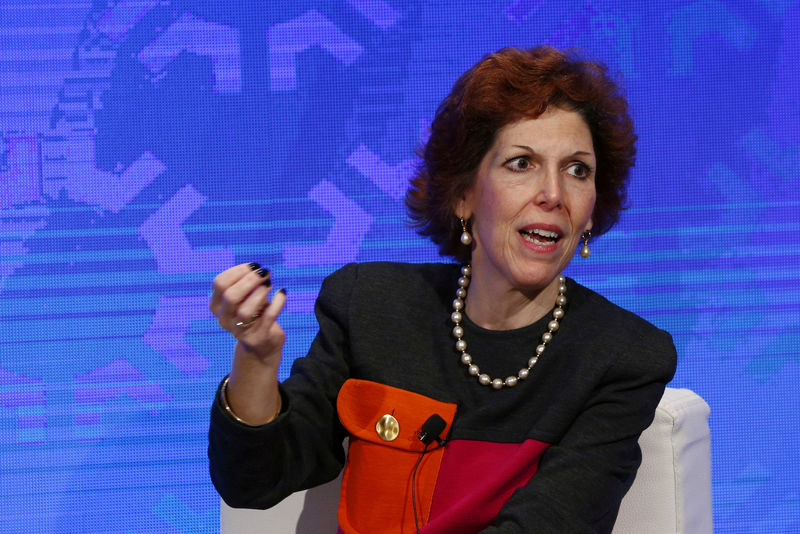 © Reuters. FILE PHOTO: Cleveland Fed President Loretta Mester takes part in a panel convened to speak about the health of the U.S. economy in New York
© Reuters. FILE PHOTO: Cleveland Fed President Loretta Mester takes part in a panel convened to speak about the health of the U.S. economy in New YorkFRANKFURT (Reuters) – Rules adopted after the financial crisis that have made big U.S. banks more resilient over the last decade should be tested in the next downturn before they are reduced in any major way, a Federal Reserve official said on Friday.
Cleveland Fed President Loretta Mester repeated that the U.S. economic outlook is as strong as it has been “in a long time.” But that does not mean that little-tested, so-called countercyclical standards, which would raise requirements on banks during good times and ahead of a downturn, should be tightened.
Instead, existing capital and liquidity standards should be set “somewhat higher than they would be if we had more experience with and confidence in the countercyclical tools,” Mester said.
“It would be a mistake to unwind the steps taken since the financial crisis that have led to a more resilient financial system,” she added in remarks prepared for delivery at the European Central Bank in Frankfurt. “I would like to see how the new settings perform throughout the cycle before making major changes.”
The Trump administration and the Republican-controlled Congress have rolled back some financial regulations in an effort to free up capital, in an aim to boost economic growth. The Fed’s leadership has taken a more measured approach, though it has moved to trim some capital requirements, and restrictions on small lenders.
The Fed has raised rates six times since late 2015 in a nod to low unemployment and below-target inflation. Mester, who backs the gradual hikes, said more aggressive tightening is a possible defense against any rising financial stability risks if such restrictions on banks proved inadequate.
Fusion Media or anyone involved with Fusion Media will not accept any liability for loss or damage as a result of reliance on the information including data, quotes, charts and buy/sell signals contained within this website. Please be fully informed regarding the risks and costs associated with trading the financial markets, it is one of the riskiest investment forms possible.
Source: Investing.com




























